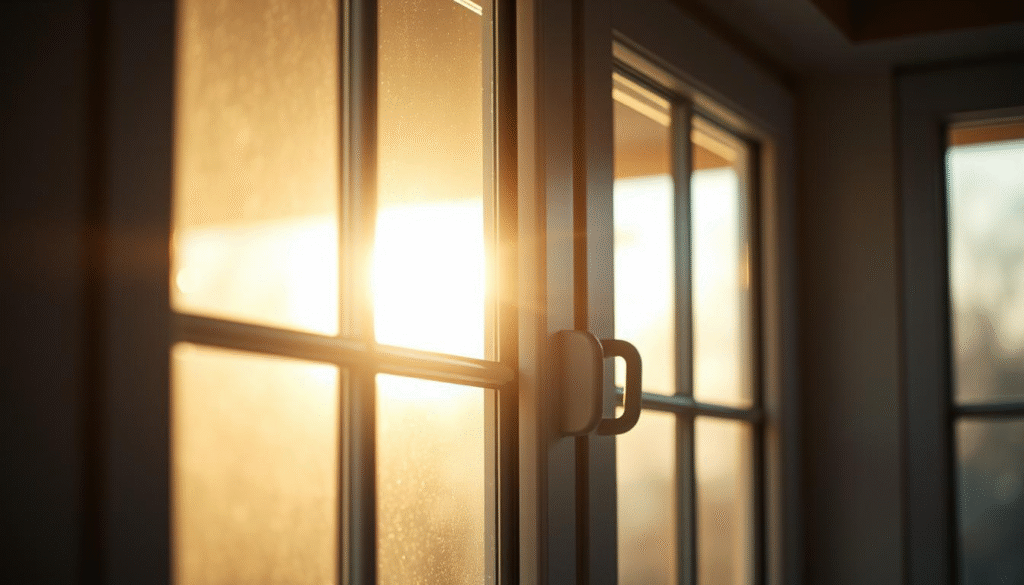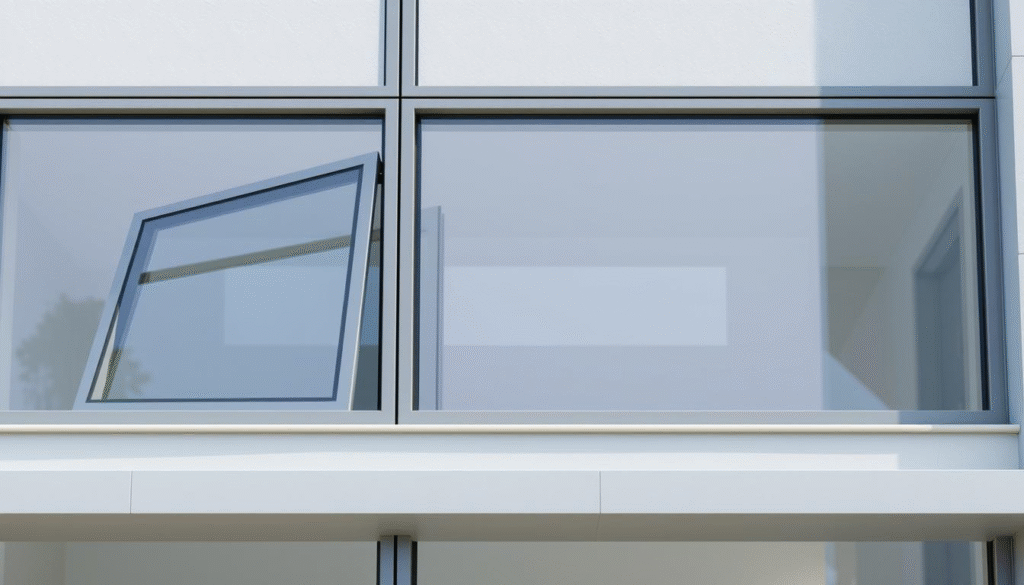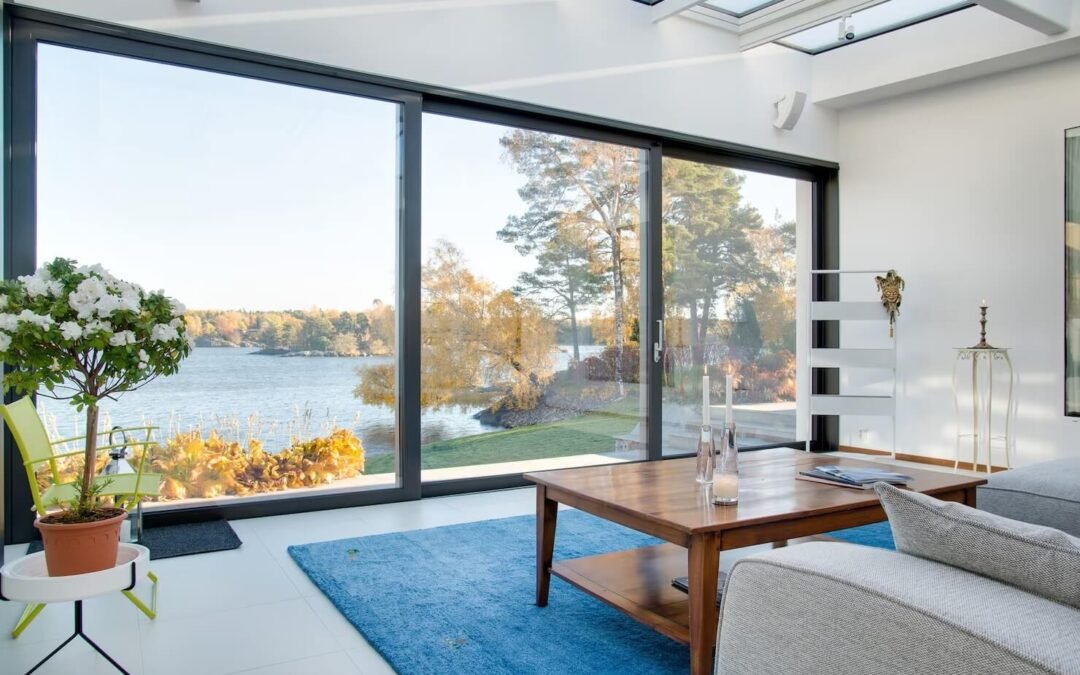Surprising fact: homes can cut heating and cooling bills by up to 20% after installing proper double glazing, and noise can fall by as much as 60% with acoustic glass.
In plain terms, these units use two panes of glass separated by a sealed gap filled with argon gas to form an insulating layer. This simple build helps an Australian home stay warmer in winter and cooler in summer.

Toned or low‑E glass improves performance, while different frames suit brick, timber and modern builds. The sealed gap cuts heat transfer and calms street or aircraft noise, which matters in busy suburbs.
Expectations for this guide: you’ll learn how units are built, why gaps and gases matter, where these products fit in Australia today and how to choose glass, frames and styles for your project.
For expert advice or a free quote, call 0440 138 658.
Key Takeaways
- Proper double glazing reduces energy use and trims bills.
- Sealed gaps with argon and low‑E glass boost energy efficiency.
- Acoustic options vastly reduce outside noise for city homes.
- Works across climates and with popular frame materials.
- Upfront cost can deliver comfort, savings and added home value.
Understanding double glazing: how two panes and a gas-filled gap create an insulated barrier
A sealed unit pairs two glass sheets with a spacer and a filled cavity to form an effective thermal shield.
Two sheets of glass sit a precise distance apart. A rigid spacer bar keeps the pane gap at an optimal 6–20 mm, often called the space two measurement.
The perimeter is hermetically sealed so the cavity stays dry and clear for years.
Why the cavity fill matters
Argon is the common choice because this inert gas has lower conductivity than air. That slows heat flow without changing the look of the unit.
Low‑E coatings and thermal control
Low‑emissivity or toned glass reflects long‑wave heat and reduces solar gain. Combined with the gas pocket, these features cut heat transfer and help keep interior temperature steady.
Performance versus single glazing
Single panes conduct heat rapidly and pass more noise. A two‑pane IGU offers better insulation and sound damping and, when paired with thermally improved frames, maintains the full barrier across the window or door system.
| Component | Role | Typical spec |
| Outer and inner glass | Structural strength, solar control via low‑E | 4–6 mm each |
| Spacer bar | Maintains uniform gap and seal | 6–20 mm gap |
| Cavity fill | Improves insulation and reduces convection | Argon preferred over air |
| Perimeter seal | Prevents moisture ingress and fogging | High‑quality, long‑life sealants |
what is double glazed windows
In plain terms: two panes of glass fitted into a sealed spacer make a single insulated unit that slows heat moving in or out of your house. The gap between panes acts like a buffer and cuts heat loss and gain compared with a single pane.

Everyday impact: rooms feel more even and comfortable inside home across seasons. You’ll notice fewer cold drafts, less condensation on chilly mornings and a quieter interior for sleep and work.
These units are a key part of the building envelope alongside wall and ceiling insulation. From bedroom openings to large living sliders, the same two‑pane approach improves thermal efficiency and reduces energy demand.
Names vary — some call them double‑glazed windows or glazed windows — but all refer to the same two‑pane insulated construction. Remember, glass, spacer, seals and the frame each play a part in long‑term performance and comfort.
Energy efficiency, comfort and quieter living: the core benefits for Australian homes
High-performing glass units slow heat flow so living areas stay comfortable in both winter and summer.
Thermal stability: the sealed cavity acts as a thermal buffer that cuts heat loss in winter and tames solar heat in summer. Studies and manufacturer data show overall heat transfer can fall by around 30%, so rooms feel more even with fewer hot or cold spots.
Lower running costs: with less reliance on heaters and reverse‑cycle air conditioning, households often save up to 20% on energy bills. That lowers household expenses and eases peak demand on Australian networks.
Acoustic comfort
The air gap disrupts sound energy, so traffic, voices and aircraft noise become less intrusive. Using acoustic laminates and varied glass thickness enhances noise reduction, with cuts up to 60% versus single panes.
Condensation control and security
Keeping the inner pane closer to room temperature reduces condensation and mould risk, protecting timber trims and finishes. Modern systems also add tougher glass and multi‑point locking for improved security and added property value.
- Benefits: better comfort, lower energy use and quieter interiors.
- Versatile: suitable for bedroom casements, large sliders and windows doors across the home.
Australian context today: climates, standards and where double glazing fits best
Australia’s wide climate zones make thermal control a priority from tropical coasts to alpine towns.
In cool southern states such as Victoria and Tasmania, sealed units curb winter heat loss and protect interior finishes. In hotter regions they cut summer heat ingress and glare, helping maintain a steady indoor temperature.
Since 1 May 2024, new builds in Victoria must meet a minimum seven‑star energy rating and include double glazing in most living areas. This push is accelerating uptake and raising expectations for certified performance.
Performance across climates
- Cool climates: reduce heating demand and condensation risk.
- Hot climates: lower cooling loads and limit solar gain in summer.
- Mixed climates: moderate large day–night swings for year‑round comfort.
Homes that pair proper glazing with shading and cross‑ventilation get the best outcomes. Retrofits, such as replacing single glass or upgrading IGUs in existing frames, give cost‑effective gains in energy consumption and comfort.
| Climate zone | Primary benefit | Best frame choice |
| Southern (Victoria, TAS) | Lower heating energy and reduced heat loss | Timber or uPVC for thermal control |
| Central & arid | Stabilised internal temperature, less daytime heat | Thermally broken aluminium for slim profiles |
| Tropical & coastal | Reduced solar gain and glare in summer | uPVC or treated timber for durability |
Household outcomes: lower energy bills, improved comfort and reduced peak energy demand. Selecting certified products and correct glazing values helps projects meet energy targets without sacrificing design intent.
Choosing your double‑glazed solution: glass types, gases, frames and window styles
Choosing the right glass, gas fill and frame affects comfort, acoustic performance and long‑term running costs.
Glass options and acoustic control
Low‑E coatings reduce heat transfer and limit solar gain. Toned glass helps glare without darkening living spaces too much.
For higher sound control, mix thicknesses or add acoustic laminates. This targets problem frequencies while keeping clear sightlines.
Gas fills and the cavity role
Argon is the common choice for value and performance. Dehydrated air works where budgets are tight, while krypton or xenon suit compact or high‑performance IGUs.
Correct space two spacing matters: 6–20 mm balances insulation and avoids convection inside the cavity.
Frames, styles and where to use them
uPVC gives low maintenance and strong thermal performance. Timber adds character and natural insulation. Thermally broken aluminium keeps slim profiles with better control.
Use sliding doors and bi‑folds for wide openings, double hung for classic facades and awnings for ventilated rooms. Glazed windows doors often come in many of these frame options.
Performance trade‑offs: double versus triple
Double glazing suits most Australian homes for cost‑to‑benefit and availability. Triple systems raise insulation and acoustic gains but add weight and expense, and need stronger frames.
| Frame | Pros | Best use |
| uPVC | Low maintenance, good insulation | General rooms, sliders |
| Timber | Warm look, natural R‑value | Heritage, living rooms |
| Thermally broken aluminium | Slim sightlines, durable | Large glazed windows doors, modern homes |
Cost, ROI and long‑term savings on your power bills
Understanding the price drivers lets you target the areas that deliver the fastest payback.
Upfront pricing factors
Costs vary with glass specification, IGU size, frame material and install complexity. High‑performance coatings, acoustic laminates and large custom units add to the quote.
Installation variables also matter. Hard‑to‑reach sites, scaffolding, custom shapes and repairing existing frames increase labour and time.
“Ask for itemised quotes that separate glass type, frame and installation so you can compare like‑for‑like.”
Bill reductions over time
Long‑term savings come from reduced heating and cooling demand. Proper upgrades can cut energy consumption and energy costs by up to 20% compared with single panes.
Pairing glazing with draught sealing and shading boosts results and reduces heat loss or gain by about 30%, improving comfort and lowering bills sooner.
- Prioritise living areas, west and south elevations for faster payback.
- Consider whole‑of‑home ROI: quieter rooms, less condensation damage and stronger resale appeal.
- Request itemised pricing to find the sweet spot between performance and budget.

| Cost driver | Effect on price | Typical benefit |
| High‑performance glass (low‑E, acoustic) | High | Better energy efficiency and sound reduction |
| Frame material (uPVC, timber, thermal aluminium) | Medium | Longevity, sightlines and thermal control |
| Installation complexity (access, custom shapes) | Variable | Increases labour, may require scaffolding |
| Standard replacements in stock sizes | Low | Lower upfront cost, faster install |
Final tip: target high‑use rooms first, get at least three itemised quotes and plan upgrades that balance initial spend with projected savings on energy costs and home comfort.
From installation to upkeep: getting the best performance for years to come
, A correct install starts with precise measurements and square, plumb openings so the insulated barrier performs as designed.
Fitters should use the right packers, seal perimeters to manufacturer specs and select frames that suit climate and load. Choose argon or air fills and coatings that match your comfort and energy goals.
Maintenance is light: clean frames and glass with non‑abrasive products, clear weep holes and inspect for fogging between panes — persistent interior condensation means a failed seal and needs a professional check.
Pair glazing with shading, draught sealing and good ventilation to boost home energy efficiency, lower heating and cooling demand and reduce noise.
For expert installation, maintenance or a quote across glazed windows doors and larger openings, call 0440 138 658.
FAQ
What are the key benefits of double glazed windows for Australian homes?
Double glazed glass offers better thermal insulation, reducing heat loss in winter and heat gain in summer. That leads to steadier indoor temperatures, lower energy consumption and reduced energy costs. It also cuts external noise, lowers condensation risk and boosts security and property value.
How do two panes and a gas-filled gap create an insulated barrier?
An insulated glass unit uses two glass panes separated by a spacer bar with a sealed cavity. That space—often filled with air or an inert gas such as argon—limits heat transfer by conduction and convection, improving the unit’s thermal resistance and comfort inside the home.
What components are inside an insulated glass unit?
Typical units include two panes of glass, a spacer bar that sets the gap, a sealed perimeter with desiccant to prevent moisture, and an inert gas fill where specified. Low‑E coatings or toned glass can be added to reduce solar heat transfer and improve performance.
Why does the gap between panes matter?
The gap provides the insulating layer. Correct width and the right gas improve thermal performance; too narrow or too wide can reduce effectiveness. Low‑E coatings on the inner pane reflect infrared heat, further cutting heat transfer through the glazing.
How does double glazed compare with single glazing in Australian conditions?
Compared with single glazing, insulated units deliver far better thermal resistance and noise reduction. They suit a wide range of climates across Australia, from humid north‑coast homes to cooler Tasmanian properties, providing year‑round comfort and energy savings.
Can you give a plain‑English definition for everyday Australian households?
It’s simply two sheets of glass sealed together with a gap between them. That gap acts like a small blanket of air or gas, slowing heat flow and sound, so your house stays cooler in summer and warmer in winter while needing less heating or cooling.
How does glazing reduce condensation and mould risk?
The inner pane stays warmer because of the insulating gap and coatings. Warmer surfaces mean less chance of moist air reaching its dew point on the glass, so condensation and the associated mould risk drop considerably.
What noise reduction can homeowners expect?
The air or gas layer between panes breaks up sound waves, offering noticeable noise reduction from traffic, neighbours and street activity. Performance varies with glass type, thickness and seal quality, and specialised acoustic glass achieves better results.
Does upgrading glazing improve home security and resale value?
Yes. Toughened or laminated glass options increase resistance to impact. Modern units often fit with multi‑point locks and stronger frames, which enhances security and can add to the property’s market appeal and value.
How do different climates across Australia affect performance?
In hot, humid areas, reflective or low‑E coatings and appropriate gas fills reduce unwanted solar heat. In cold regions, larger gaps with inert gas and well‑insulated frames help retain heat. Proper selection tailors performance to local climate needs.
What glass types and gases should I consider?
Options include low‑E, toned/reflective, acoustic and varying thickness combinations. Air is standard, while argon offers better insulation. Specialist gases like krypton are used in tighter gaps or high‑end applications. Choice depends on budget and performance goals.
Which frame materials work best with insulated glazing?
uPVC, timber and aluminium are common. uPVC gives good thermal breaks and low maintenance; timber offers strong thermal and aesthetic appeal; aluminium suits contemporary designs but needs thermal breaks to avoid heat transfer. Each affects overall efficiency and cost.
Where is insulated glazing typically used in a home?
It’s suitable for windows and doors including sliding doors, bi‑folds, double hung and casement units. Use it in noisy rooms, living areas with large glass expanses, and bedrooms where thermal comfort and sound control matter most.
Should I consider triple glazing over two panes?
Triple glazing provides higher insulation and noise reduction but at greater cost and weight. In Australia, twin‑pane units deliver strong value for most homes; triple glazing may suit very cold climates or specialist projects.
What factors determine the upfront price of an insulated unit?
Pricing depends on glass specification, gas fill, coatings, unit size, frame material, hardware and installation complexity. Custom shapes, acoustic glass or high‑performance coatings increase cost but improve ROI through energy savings.
How quickly will I see savings on my power bills?
Savings vary by home, climate and existing glazing. Many households notice reduced heating and cooling use within months, with cumulative bill reductions over years. Accurate payback estimates depend on energy use patterns and the quality of installation.
What maintenance keeps performance high over time?
Regular frame cleaning, checking seals and ensuring drainage paths remain clear are key. If a unit shows persistent condensation between panes, the seal may have failed and the IGU should be replaced to restore performance.
How do I choose a reputable installer in Australia?
Look for accredited suppliers, clear product specifications, written warranties, and references or local reviews. A professional installer will explain glass types, frame options and expected energy gains for your specific climate.

